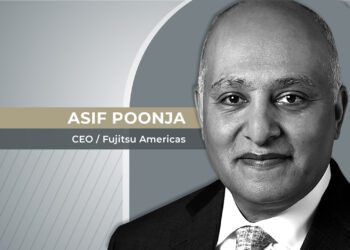President and CEO Jack Kopnisky has overseen a string of acquisitions that have enabled Sterling Bancorp to perform beyond expectations.
When Provident Bank acquired Sterling Bancorp in 2013 amid a string of acquisitions, the former legally changed its name to Sterling, beginning a new chapter for a bank originally founded in New York in 1888. Yet the new era for both involved more than simply a name change. The merger was intended to create a larger, more diversified company with a broader range of financial products and services for small-to-middle market commercial clients and consumers.
“During that period, we acquired four different banks and nine portfolios,” Jack Kopnisky, President and CEO of Sterling Bancorp, told CEO Magazine in an exclusive interview. “The end result of that is that our bank originates 75% of the business from the Metropolitan New York City area and the other 25% as a national commercial finance company that operates a variety of activities across the country.”
Sterling Bancorp is a regional bank holding company whose principal subsidiary, Sterling National Bank, provides a full range of banking and financial services to business owners, their families, and consumers, primarily in the greater New York metropolitan and Hudson Valley regions. Headquartered in Montebello, New York, Sterling Bancorp’s shares are traded on the New York Stock Exchange.
Adding value
In running a mid-sized regional bank, Kopnisky believes strongly that Sterling Bancorp cannot be all things to all people and has instead focused on commercial and consumer business segments where he believes the company can add value both in the New York metropolitan area and nationally.
“Banks have always faced the challenge of trying to provide service to every segment with every product,” he elaborated. “For example, we don’t have a mortgage company, in part because we have partnerships with outside firms that provide those products and services. The reality is that unless you’re really big you’re going to be relatively inefficient and there’s really not much value added for our clients or shareholders.”
Nevertheless, the success of Sterling Bancorp over the past few years has impressed Kopnisky, as shown through an earnings per share growth of more than 10%, a return on average assets of around 150 basis points and above, and a return on equity of 17% or higher, all of which has seen the company work to take advantage of a number of factors in the finance industry from technology to market disruption.
“When we first set out, we didn’t expect the size of the company to be where it is,” Kopnisky said. But as you get bigger, there are real economies of scale. Banking has traditionally invested in operating processes and physical locations, whereas today technology drives a lot of what we do. Currently, we have a very effective plan to grow organically and supplement that growth with acquisitions. Our efficiency ratio is among the very best in the industry. The metrics we have set out are ones that generally keep us in the top quartile of all the peer banks in our industry. When there are growth opportunities both organically and through acquisitions, we map the opportunities against those types of objectives. We want to create a company that is a high performing company, both now and into the future.”
Constant reinvention
Kopnisky believes passionately that great companies reinvent themselves all the time, and as such, he has worked hard to foster a change oriented culture within Sterling Bancorp. To this end, the company officially refers to its employees as colleagues– teams and individuals whose performance is not only measured by scorecards and metrics, but who also understand the values Sterling is working to promote both internally and in the industry more broadly.
“We work with people rather than have them working ‘for’ us,” Kopnisky stressed. “We do that by ensuring that our colleagues understand what is expected of them and execute within the context of a value set. I believe the best companies in the world treat each colleague as an individual, as a person, in the context of their role and responsibility, rather than by their title. It fosters a collaboration between functions instead of having silos within the company. It comes down to what is expected, what are the measurements of success, and then how we need to behave and what values we need to demonstrate. Those things go into an overall view that you have to be able to reinvent the company all the time because the environment, the clients, and the needs of our colleagues are always changing.”
Strategic partnerships
Kopnisky says that one of the ways Sterling Bancorp has differentiated itself among its competitors is how the company delivers value, boasting single points of contact for its clients and also deploying technology to enable the client to control the transaction side of banking in increasingly innovative ways.
“Every client is aligned to a team and that team is responsible for providing value for them, he explained. That team handles all their needs–loans, deposits, business or personal. And the technology side may be the biggest thing to change in banking in recent years, being able to transfer money at 11pm because that’s the only time you have to do that, or go online and make the transaction happen.”
To this end, Sterling Bancorp has been keen to build strategic partnerships with major tech and consultancy players such as Deloitte and LPL, and a host of smaller firms, with a view to enabling its colleagues and clients to utilize the very best and most innovative technology available. To this end, the company is focused on three key areas: client technology, operating technology, and what Kopnisky refers to as colleague technology.
“Client technology means making it easier for our clients to control their financial destiny by using technology to carry out transactions,” he specified. “Operating technology involves taking paper and human involvement out of processes by utilizing artificial technology, and colleague technology enables our colleagues, or employees, to do a better job. My belief is that you have to work really hard at cultivating these alliances but when you find the right ones they are better than if you try to do things yourself.”
“In any business, you take your human and financial capital and focus them on areas where you think you can make a difference,” Kopnisky concluded on his philosophy towards running Sterling. “Strategy is always interesting but the most important thing is execution. The ability to have execution excellence in terms of doing what we say we’re going to do. That relates to clients, shareholders, colleagues, as well as the communities we’re in. I believe that kind of accountability is a hallmark of all great companies.”














